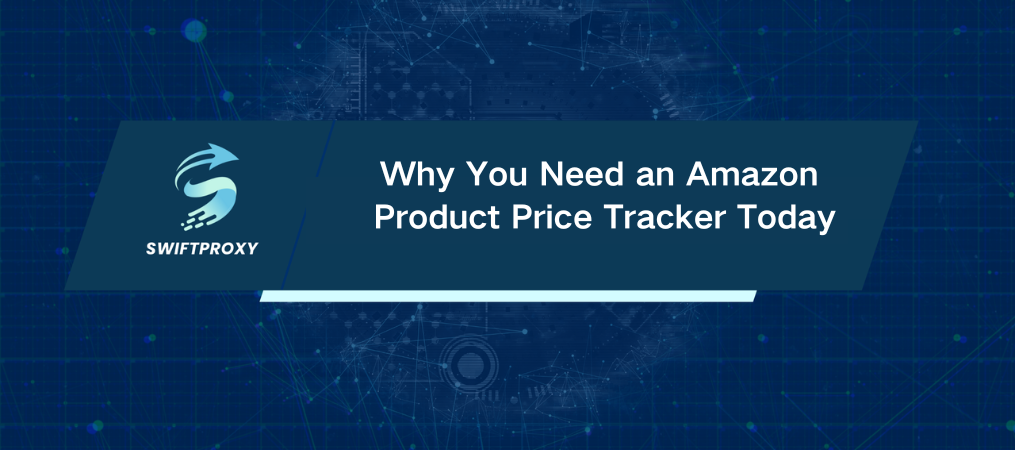Why You Need an Amazon Product Price Tracker Today

Amazon is more than just the world's largest online retailer—it's a treasure trove of real-time pricing data. For anyone looking to track pricing trends, analyze the competition, or gain market insights, scraping Amazon prices is an incredibly valuable tool. Whether you're an eCommerce business owner, researcher, or just a savvy shopper, this guide will show you how to efficiently scrape Amazon pricing data and use it to your advantage.
Understanding Amazon Product Price Tracker
An Amazon product price tracker is a tool or software that automatically pulls product pricing information from Amazon's website. Think of it as your digital assistant, gathering data without you having to click through thousands of product pages. This can save you hours—or even days—of manual work, especially when you need up-to-date pricing for competitive analysis, price tracking, or market research.
Scraping works by sending automated requests to Amazon's product pages to collect key information such as prices, discounts, and availability. The data is then structured and saved in formats like CSV or JSON, making it easy to analyze. But here's the catch: Amazon has measures in place to block unauthorized scraping, so using advanced tools and strategies is essential to avoid detection.
Reasons to Scrape Amazon Prices
The reasons for scraping Amazon are numerous. The most obvious benefit? Price tracking. In industries like electronics or fashion, prices can change on a dime. By automating the process, you get real-time alerts on price drops, deals, and discounts, ensuring you're always in the loop and able to act fast.
For eCommerce businesses, scraping Amazon prices provides a goldmine of data on your competitors. Want to know what prices your rivals are offering? What products are in demand? Scraping allows you to track their pricing strategies and identify opportunities to stay one step ahead.
But it doesn't stop there. Scraping also uncovers market trends and consumer behavior patterns. Seasonal price shifts, peak shopping times, and best-selling products can all be revealed. Armed with this data, businesses can adjust pricing, refine inventory strategies, and boost profitability.
Effective Methods for Scraping Amazon Prices
Whether you're a coding pro or a non-technical user, there are various ways to scrape Amazon prices. Let's break down the most effective methods.
1. Buy Pre-Collected Datasets
For those who want quick access to reliable data, purchasing pre-collected Amazon datasets is an easy win. These datasets, organized by product categories or timeframes, come in ready-to-use formats like CSV or JSON. It's a hassle-free way to get large-scale pricing data without any of the technical setup.
However, always make sure to purchase from reputable providers to ensure the data complies with Amazon's guidelines.
2. Build Your Own Scraper
If you're comfortable with code, you can build your own scraper using Python and libraries like Selenium or BeautifulSoup. This gives you complete control over what data you scrape and how you process it. It's also ideal if you need to scrape dynamic content or handle JavaScript-heavy pages.
But beware: Amazon is tough on scrapers. To keep things running smoothly, you’ll need to use rotating proxies to mask your IP address and avoid getting blocked. Slowing down your request speed can also help mimic natural browsing behavior and reduce the chances of detection.
3. Use Web Scraping Tools (No Code Required)
For those who want a more user-friendly approach, web scraping tools are your best bet. APIs like Swiftproxy's eCommerce Scraping API make it easy to scrape Amazon data without writing a single line of code. These tools handle all the complexity for you—automatically rotating proxies, bypassing CAPTCHAs, and delivering data in real-time.
You can get started with pre-configured scraping templates, which makes the whole process easy by simply clicking a button.
Step-by-Step Amazon Price Scraping Without Code
You don't need to be a coder to scrape Amazon prices. With tools like Swiftproxy's eCommerce Scraping API, anyone can extract pricing data in just a few simple steps:
Step 1: Obtain the eCommerce Scraping API
Sign up for Swiftproxy and access the eCommerce Scraping API. Choose a subscription plan that suits your needs.
Step 2: Choose a Pre-Made Scraper
Within the dashboard, navigate to the Scrapers tab, and select the Amazon Pricing scraper. This template is ready to go, specifically designed for scraping Amazon prices.
Step 3: Adjust Your Scraping Request
Enter the ASIN (Amazon Standard Identification Number) of the product you want to scrape. You can find this in the product's URL. Want to scrape multiple products? Simply enable the Bulk parameter to target several queries at once.
Set other parameters like the device type, browser, and page number for fine-tuned control.
Step 4: Hit "Start Scraping"
Once your parameters are set, click Start Scraping. Your data will be extracted and delivered straight to your inbox, webhook, or Google Drive—on a schedule that fits your needs. You can even export it as CSV or JSON.
No code required, and you're ready to access valuable pricing data within minutes.
Why This Is a Game-Changer
Imagine having access to Amazon's pricing data, updated in real-time. Whether you're tracking competitors, optimizing your own pricing, or making smarter purchasing decisions, an Amazon product price tracker gives you the upper hand.
By using tools like Swiftproxy's eCommerce Scraping API, you gain a competitive edge without the headache of coding or dealing with anti-scraping measures. It's fast, efficient, and scalable—ideal for anyone looking to stay on top of the game.
Final Thoughts
Scraping Amazon prices isn't just for tech experts or large enterprises. With the right tools, anyone can leverage this powerful method for price tracking, market insights, and competitor analysis. So why not take advantage of this goldmine of data and start making smarter, data-driven decisions today?

















































